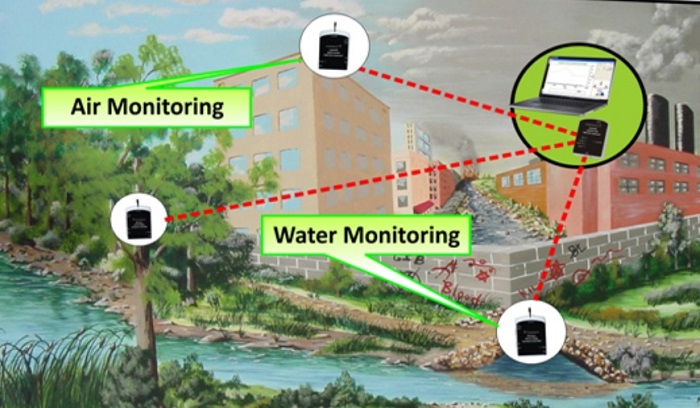
The mass fish deaths on the La Nga River days ago might have been prevented if an IoT water & air monitoring system had been applied, according to Phan Dinh The Duy from the HCM City University of Science & Technology.
 |
| The water & air monitoring system. |
The mass fish deaths on the La Nga River days ago might have been prevented if an IoT water & air monitoring system had been applied, according to Phan Dinh The Duy from the HCM City University of Science & Technology.
The World Health Organization (WHO) has released a report showing that 7 million people worldwide die every year because of air pollution. The problem is especially serious in urban areas.
Most recently, local newspapers reported that 1,500 tons of fish on La Nga River died because of toxic gas in water which was tens times higher than the permitted level.
Duy said cases like La Nga could be anticipated and prevented if applying a water quality monitoring system based on IoT technology.
Duy said environment monitoring devices can predict and alert when unfavorable conditions occur. IoT apps can also discover waste sources and forecast the possible spreading of the waste.
Moreover, the IoT-based water and air monitoring systems, combined with Data Mining and Machine learning can be used to give real-time assessments about environmental quality and give predictions.
Ho Quoc Bang from the Environment & Natural Resources Institute under the HCMC National University, emphasized that to do this, Vietnam needs to have models of calculation and simulation, especially of air pollution.
“Air pollution is a very complicated and a non-linear problem. The location and level of pollution depend not only on the discharge sources, but also on meteorology factors. The assessment and air quality control models play a very important role,” Bang said.
In Vietnam, IoT applications in water and air monitoring have received special attention, which is a great opportunity for made-in-Vietnam products.
The IoT air and water monitoring device developed by the HCMC University of Science & Technology has been applied in 25 places, including state management agencies in Tien Giang, Tay Ninh and Vinh Long and the Coca’s factory in HCMC and Hanoi.
The Environment & Natural Resources Institute has used different models to survey the pollution status and its impact on the community’s health in many places, including HCMC, Can Tho and Tra Vinh.
More recently, SHTP Labs introduced an automatic water level monitoring system utilizing sensing technology, which can give alerts about floods.
(Source: VNN)





